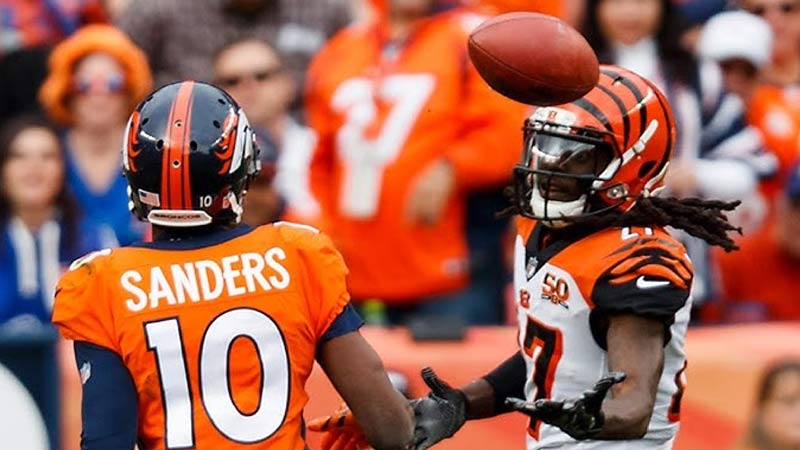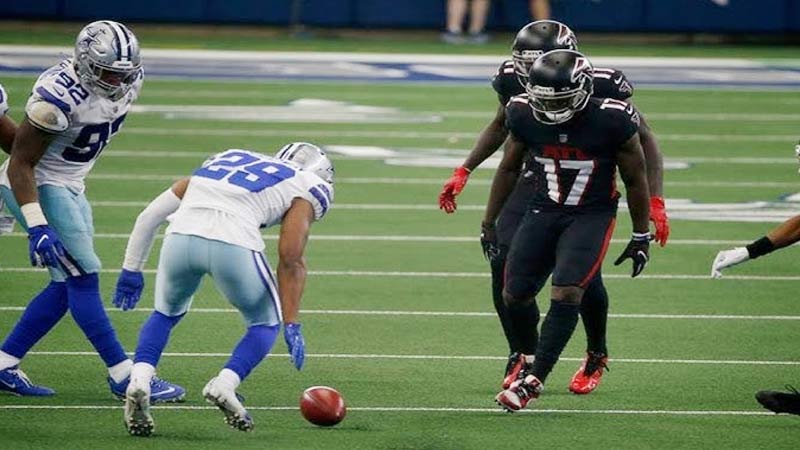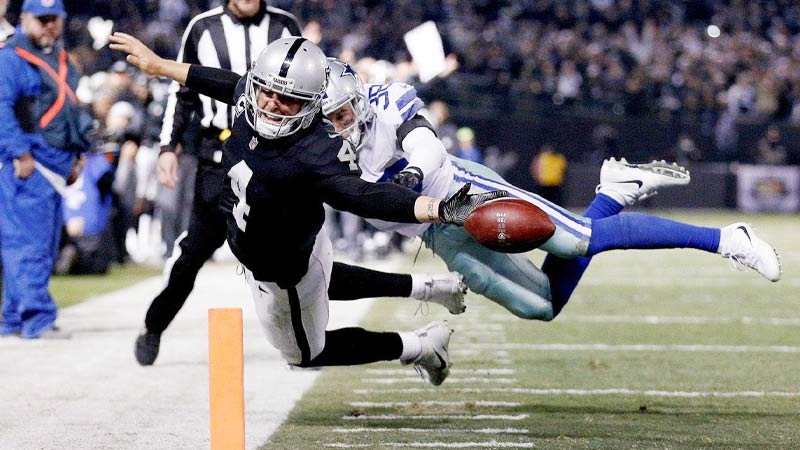Embarking on a journey through the intricacies of football fumble rules unveils the dynamic and strategic nature of the game.
Fumbles, pivotal moments that can alter the course of a match, necessitate a nuanced understanding of the rules governing these unexpected events.
From live ball scenarios to the role of instant replay, this comprehensive guide aims to demystify football fumble rules.
We’ll delve into the consequences of a fumble going out of bounds, explore the potential for defensive touchdowns, and clarify distinctions between fumbles and incomplete passes.
Whether you’re a passionate fan, aspiring player, or curious observer, this exploration of football fumble rules will enrich your appreciation for the sport’s strategic dimensions. So, stay sharp.
What is a Fumble?
A fumble is a football term that refers to a player’s accidental loss of possession of the ball during a play.
It occurs when a player carrying the ball drops it or loses control, and the ball becomes free and is up for grabs by either team.
Fumbles often result from tackles, mishandling of the ball, or defensive plays disrupting the ball carrier’s control.
Recovering a fumble is crucial for the opposing team, granting them possession and a potential opportunity to score.
Fumbles can significantly impact the outcome of a game, emphasizing the importance of ball security and effective defensive strategies in football.
Types of Fumbles in American Football
In American football, fumbles are crucial events that can shift the momentum of a game.
There are various types of fumbles, each arising from different circumstances on the field:
Strip/Scoop Fumble
This occurs when a defensive player deliberately knocks or strips the ball from the offensive player’s grasp.
The defensive team aims to recover the loose ball quickly, turning the play in their favour.
Muffed Punt or Kickoff
Special teams plays, such as punts or kickoffs, can result in a fumble if the receiving team fails to secure the ball properly.
A muffed catch or mishandling of the ball can lead to turnovers and potential scoring opportunities for the opposing team.
Quarterback Sack Fumble
Quarterbacks, often targeted by defensive linemen or linebackers, may fumble the ball when tackled behind the line of scrimmage.
This type of fumble is critical, as it can impact the offensive team’s field position and possession.
Bad Exchange Fumble
Miscommunications between the centre and quarterback during a snap can result in a fumble, known as a bad exchange.
This can happen in crucial situations like goal-line stands, adding an element of unpredictability to the game.
Running Back Fumble
Ball security is paramount for running backs, but aggressive defensive plays or a lapse in ball control can lead to fumbles.
These fumbles often occur during tackles, emphasizing the importance of a running back’s ability to protect the ball while navigating opposing defences.
Basic American Football Fumble Rules

Understanding the rules surrounding fumbles in American football is essential for players, coaches, and fans alike. Here are some basic principles governing fumbles:
Live Ball
When a fumble occurs, the ball is considered “live,” meaning it is still in play and can be recovered by either team.
The game continues until the play is officially declared dead by the officials, and possession can change hands rapidly.
Recovery and Possession
The team that recovers the fumble gains possession of the ball. This recovery can happen when a player falls on the loose ball, grabs it, or otherwise gains control.
Securing a fumble recovery is pivotal for a team’s chances of maintaining or changing the course of the game.
Advance by Offense
If the offensive team recovers its fumble, they can continue the drive.
The play does not end with the recovery; the offensive team can advance the ball further down the field, provided they maintain possession.
Immediate Whistle
In some situations, officials may blow the whistle immediately after a fumble if they determine that the ball carrier’s forward progress has been stopped.
This helps prevent unnecessary pile-ups and reduces the risk of injuries.
Challenges and Reviews
Coaches have the option to challenge certain fumble calls through the replay system.
Suppose there is uncertainty about the recovery or the circumstances leading to the fumble. In that case, the officiating crew can review the play to ensure the correct call is made, adding an extra layer of fairness to the game.
Penalties for Breaking Football Fumble Rules
Adhering to the rules governing fumbles in football is crucial for fair play and the integrity of the game.
Violating these rules can result in penalties, impacting the offending team.
Here are critical penalties associated with breaking football fumble rules:
Illegal Batting

Intentionally striking or batting the ball forward or backward to influence the ball’s possession is deemed illegal.
Suppose a player is guilty of such an action during a fumble situation. In that case, the team incurs a penalty, often a loss of yardage, to discourage unfair manipulation of the loose ball.
Unsportsmanlike Conduct
Engaging in unsportsmanlike conduct, such as intentionally kicking or punching the ball during a fumble, can lead to penalties. Such actions not only violate fair play principles but also risk player safety.
Penalties for unsportsmanlike conduct can result in significant yardage losses and, in some cases, player ejections.
Personal Foul
Aggressive or dangerous actions during a fumble recovery attempt, like unnecessary roughness or late hits, may result in personal foul penalties.
These penalties can have severe consequences, impacting field position and providing the opposing team advantageous positioning.
Delay of Game
Excessive delays in retrieving the ball after a fumble, either due to intentional stalling or lack of urgency, can result in a delay of game penalty.
This penalty typically involves the loss of yards, placing additional pressure on the offending team to expedite their play.
Illegal Substitution or Participation
The team may incur penalties if a player enters the field illegally during a fumble recovery attempt or if there are unauthorized substitutions.
These penalties are designed to maintain fair play and ensure that only eligible players participate in the game.
Fumble Challenges and Reviews
In American football, the ability to challenge and review potential fumble situations adds an extra layer of accuracy to officiating decisions.
Coaches have the opportunity to contest specific calls through a replay system. Here are key points related to fumble challenges and reviews:
Coach’s Challenge
Coaches are allowed a limited number of challenges per game, typically two or three, depending on the league.
A coach can use a challenge to question the ruling on the field regarding a fumble, challenging the officials’ decision and asking for a review.
Replay Review Process
When a coach challenges a fumble call, the game’s officials use video replay technology to reexamine the play.
The review process involves scrutinizing various camera angles to determine the accuracy of the original call. This ensures a more objective and precise decision-making process.
Criteria for Overturning Calls
For a fumble call to be overturned, there must be clear and convincing evidence that the ruling on the field was incorrect.
If the visual evidence is inconclusive or insufficient to reverse the call, the original ruling stands, emphasizing the importance of maintaining the integrity of the on-field decision.
Impact on Timeouts
If a coach’s challenge is booming, and the fumble call is overturned, the challenging team retains its right to challenge further plays.
However, if the challenge is unsuccessful, the team loses a timeout. Proper strategic use of challenges is crucial, as running out of challenges or timeouts can limit a team’s ability to contest subsequent rulings.
Centralized Review System
In some football leagues, a centralized review system is employed, where a designated replay official, rather than on-field referees, reviews the plays.
This centralized approach aims to streamline and expedite the review process, ensuring consistent and efficient decision-making.
FAQs
What happens if a player fumbles the ball out of bounds?
If a fumble goes out of bounds, the team that last possessed the ball retains possession at the spot where it went out.
However, if the fumble goes out of the opponent’s end zone, it results in a touchback, with the defending team gaining possession.
Can a team score a touchdown directly from a fumble recovery?
If the defensive team recovers a fumble and advances it into the opponent’s end zone, they score a touchdown. This provides a unique opportunity for defensive plays to contribute to scoring directly.
Is a fumble always considered a live ball?
Yes, a fumble is considered a live ball until the officials declare the play dead.
This means that until the whistle blows, either team can recover the loose ball and potentially change possession.
Can a quarterback’s forward pass be considered a fumble?
No, a forward pass by the quarterback is not considered a fumble. A fumble refers explicitly to losing possession of the ball while it is on the ground. If a forward pass is dropped, it is ruled incomplete.
What is the role of instant replay in reviewing fumble calls?
Instant replay is used to review fumble calls challenged by coaches. The replay process involves scrutinizing video evidence to ensure the accuracy of the on-field ruling.
If there is clear and convincing evidence, the call may be overturned or confirmed, maintaining the integrity of the game.
Wrapping Up
In American football’s fast-paced world, mastering the intricacies of fumble rules is akin to decoding a strategic playbook.
From the nuanced outcomes of a fumble going out of bounds to the potential game-changing defensive touchdowns, each rule serves as a critical piece in the intricate chessboard of the gridiron.
As we conclude this journey through football fumble rules, it becomes evident that these rules are not mere technicalities; they are the threads weaving the fabric of suspense and unpredictability that makes the sport exhilarating.
Whether you’re a dedicated fan or an aspiring player, understanding these rules adds depth to the game, transforming each fumble into a potential turning point and ensuring that every match unfolds with precision and passion. Thank you very much.







